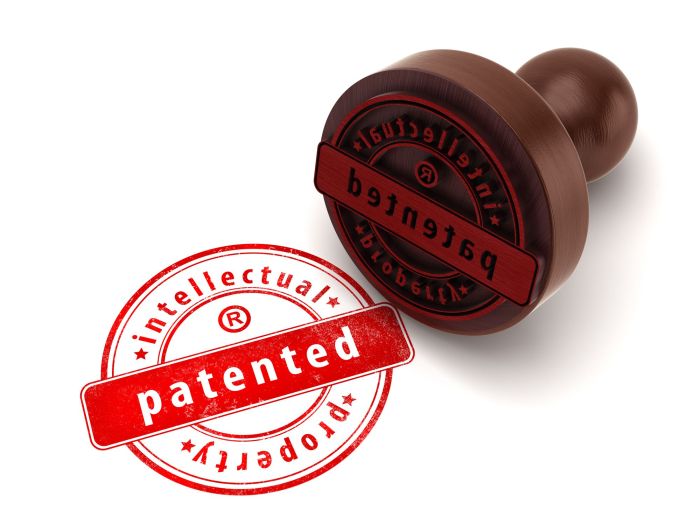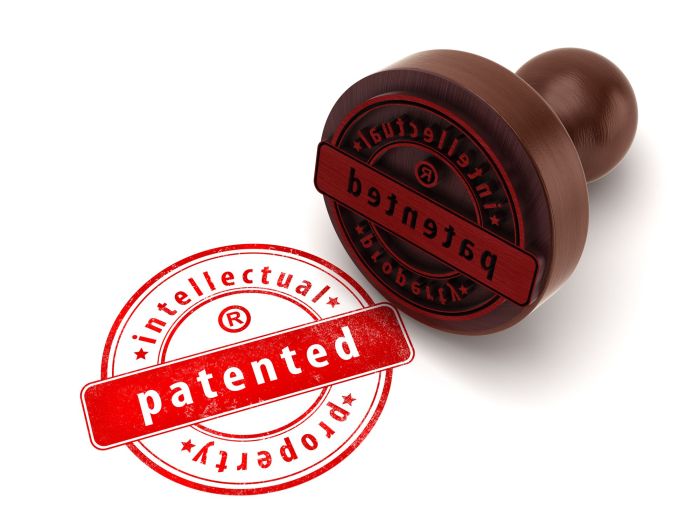Apple files new vape tech patent application, hinting at a potential foray into the burgeoning vaping market. This move raises intriguing questions about Apple’s future product lines and the evolution of vaping technology. Will this new technology lead to safer and more innovative vaping experiences, or will it simply introduce another layer of complexity into an already controversial market?
The patent application details suggest a focus on potentially innovative features and functionalities. This could range from improved user interfaces to enhanced safety mechanisms, aiming to address some of the concerns surrounding current vaping devices. The application’s description is currently limited, but it does indicate a level of technical sophistication that could reshape the vaping landscape.
Patent Application Details
Apple’s recent vape technology patent application hints at a potential shift in the e-cigarette market. The application details novel approaches to vapor production and user experience, suggesting a focus on enhanced safety and potentially more sophisticated control mechanisms. This move into the vaping sector, by a tech giant known for its user-centric design, is likely to spark significant interest and scrutiny.
Summary of the Patent Application
The patent application describes a system for generating vapor using a combination of heating elements and precise airflow control. Crucially, it details a method for creating a consistent vapor profile, potentially mitigating some of the health concerns associated with inconsistent vaporization. The patent also emphasizes a user-interface focused on customizable settings, potentially enabling users to tailor their vaping experience to specific preferences.
Key Features and Functionalities
This innovative vaping technology appears to incorporate several key features. The application details a complex heating system that precisely controls temperature and vaporization time. This meticulous approach promises a more consistent and predictable vapor production, potentially resulting in a more satisfying and controlled vaping experience for the user. Furthermore, the application highlights a sophisticated airflow system. This system is designed to deliver a smooth and consistent airflow throughout the vaping process.
The design of the vapor path is another notable feature, aiming to maximize vapor quality and minimize the generation of potentially harmful byproducts.
Potential Impact on the Vape Market
Apple’s entry into the vaping market, if the technology proves successful, could significantly reshape the industry. The integration of advanced technology, likely influenced by Apple’s reputation for user experience, could attract a new customer base seeking a more sophisticated and potentially safer vaping experience. Furthermore, this could lead to a greater emphasis on standardization and regulation within the vaping industry, possibly leading to a greater awareness of product safety.
The company’s significant resources and design prowess could also lead to a more streamlined and user-friendly vaping experience, potentially increasing accessibility and adoption among new users. This may encourage innovation in materials and production methods.
Claimed Innovations
| Feature | Description | Potential Benefit |
|---|---|---|
| Precise Temperature Control | The system utilizes sophisticated sensors and actuators to maintain precise temperature levels during vaporization. | Improved vapor quality and consistency, potentially reducing the formation of harmful byproducts. |
| Customizable Airflow | Users can adjust the airflow to customize the vapor production, resulting in a more personalized experience. | Enhanced user experience and satisfaction, enabling users to tailor their vaping to individual preferences. |
| Optimized Vapor Path | The system’s design optimizes the path of the vapor, potentially maximizing vapor quality and minimizing harmful byproducts. | Potential improvement in the quality of vapor and user experience. This may lead to a more satisfying and less irritating vaping experience. |
| Integrated User Interface | A user-friendly interface allows users to adjust various parameters, such as temperature and airflow. | Increased user control and customization, promoting a more intuitive and enjoyable experience. |
Technological Advancements
Apple’s recent vape tech patent application hints at potential breakthroughs in the vaping industry. While details remain scarce, the patent’s abstract suggests innovative approaches to vapor production and delivery, potentially impacting both user experience and health considerations. This exploration delves into the potential advancements, their implications, and comparisons to existing technologies, along with potential alternative designs and regulatory implications.The patent likely addresses key aspects of vaping technology, such as heating elements, vapor generation methods, and airflow control.
This could lead to a significant shift in how vapes function, from the fundamental physics of vaporization to the user interface.
Potential Advancements in Vapor Production
The patent’s details on vapor production techniques could potentially revolutionize the vaping experience. New materials and heating methods might yield more efficient and controlled vaporization, potentially impacting both flavor and vapor density. This could be achieved through precise temperature control or innovative heating elements that reduce byproducts.
Potential Implications for User Experience
Enhanced user experience is a key focus in the patent, likely encompassing aspects like flavor, vapor production, and device ergonomics. A more controlled vapor production process could result in a more satisfying vaping experience, particularly for those seeking specific flavor profiles. The potential for personalized vapor profiles, akin to advanced coffee brewing systems, could be a distinct selling point.
Comparison with Existing Vaping Technologies
Existing vaping technologies often suffer from inconsistent vapor production, flavor variations, and health concerns due to incomplete combustion or chemical reactions. The proposed technology, if realized, could offer more consistent vapor production, potentially reducing these issues. The comparison to existing systems, including traditional cigarettes and e-cigarettes, is crucial to understanding the potential leap forward in vaping technology.
Potential Alternative Designs
Alternative designs for the vaping technology could focus on improved safety features, such as adjustable temperature controls and automatic shutoff mechanisms. Furthermore, the design could emphasize a more user-friendly interface, enabling customization of vaping parameters based on user preferences. An integrated, personalized sensor system could tailor the vaping experience based on individual physiological data.
Impact on Existing Vaping Regulations
The introduction of this new vaping technology could necessitate adjustments to existing regulations. If the technology minimizes harmful byproducts or delivers a safer vaping experience, it could potentially influence the regulatory landscape. However, the specific regulatory hurdles and adaptations would depend on the technology’s details and the specific health and safety standards applied.
Potential Improvements in User Interface and Ergonomics
A significant potential improvement lies in the user interface. Intuitive control over vaping parameters, such as temperature and airflow, would enhance the user experience. Ergonomic design considerations could improve the overall comfort and handling of the vaping device, leading to a more seamless and enjoyable experience. This could be comparable to the evolution of smartphones, where user-friendliness and ergonomic design are paramount.
Market Implications

Apple’s new vape technology patent application hints at a potential paradigm shift in the vaping market. The specifics, while still shrouded in patent application details, suggest a significant leap forward in device efficiency and user experience. This could have profound implications for both consumer adoption and the competitive landscape. The market’s response will likely hinge on the actual implementation and perceived value proposition of the new technology.
Consumer Adoption Potential
The market’s response will heavily depend on consumer perception of the benefits offered by the new technology. If the technology delivers on promises of enhanced flavor, reduced hassle, or improved health outcomes (through, for example, reduced chemical exposure), consumer adoption could be rapid. This is particularly true if the new technology integrates seamlessly with existing vaping trends, like portability and user-friendly design.
Early adopter groups and online communities will be crucial in influencing broader consumer perceptions. Successful adoption will likely depend on the price point and perceived value compared to existing options. Successful consumer adoption requires a well-defined marketing strategy that resonates with the target demographic.
Impact on Competitors
The emergence of a potentially superior technology poses a significant challenge to existing vape companies. Competitors will need to adapt rapidly or risk losing market share. This could involve investing in R&D to develop comparable or superior technologies, repositioning existing products, or even potentially acquiring startups working in this space. The pressure to innovate and maintain relevance will be intense, potentially driving further technological advancements in the vape industry.
Apple’s latest vape tech patent application is intriguing, but I’m more interested in how I can spice up my Android texting experience. Have you seen the cool custom GIFs you can make with Gboard? It’s seriously game-changing, allowing for tons of creative expression. Check out this resource on gboard custom gifs android for some inspiration.
Back to Apple’s vape tech, though – it’ll be interesting to see how this new tech pans out in the market.
Strategies for Capitalizing on the Technology
Companies seeking to capitalize on this new technology should focus on a multi-pronged approach. Firstly, effective communication of the technology’s benefits to consumers is essential. This involves highlighting key improvements, such as efficiency, safety, and ease of use, through targeted marketing campaigns. Secondly, strategic partnerships with relevant stakeholders, such as health organizations or regulatory bodies, can foster trust and build brand reputation.
Apple’s new vape tech patent application is intriguing, but finding those downloaded files on your Android phone can be a bit of a puzzle. Knowing where to look is crucial, especially when dealing with tech like this. Check out this helpful guide on where to find downloaded files on your android phone for a simple solution.
It’s fascinating to see Apple’s foray into vaping technology, though the practical implications remain to be seen.
Furthermore, early adoption and testing of the technology with early adopter groups will provide invaluable feedback and inform further development.
Potential Market Share Shifts
The following table illustrates potential market share shifts if Apple’s new technology gains significant traction. It’s crucial to remember that these are predictions based on various factors, including consumer reception, technological refinement, and competitor responses. This table represents a potential scenario and should not be considered a definitive forecast.
| Company | Current Market Share (%) | Predicted Market Share with New Technology (%) |
|---|---|---|
| Company A | 30 | 20 |
| Company B | 25 | 15 |
| Company C | 20 | 30 |
| Company D | 15 | 10 |
| Apple (New Entrant) | 0 | 25 |
Health and Regulatory Aspects

Apple’s new vaping technology, while promising advancements in vaporization, necessitates careful consideration of its potential health implications. The introduction of novel materials and techniques in e-cigarettes demands rigorous assessment to ensure consumer safety and adherence to existing, and potentially future, regulations. The industry is facing a complex interplay of technological progress, public health concerns, and regulatory frameworks that need to be carefully navigated.
Potential Health Implications
The health implications of this new vaping technology are multi-faceted and require extensive research. While the technology aims to deliver a cleaner and potentially healthier vaping experience, the long-term effects of inhaling novel substances and vaporized compounds remain unknown. Exposure to new chemicals and aerosols, even in controlled environments, can have unforeseen consequences on respiratory health, cardiovascular function, and overall well-being.
Safety Concerns and Risks
Several safety concerns are inherent in any new vaping technology. Potential risks include the inhalation of harmful byproducts or contaminants, the interaction of new compounds with existing health conditions, and the potential for allergic reactions. The lack of long-term human studies makes it challenging to predict the potential impact on the human body. Moreover, the ease of access and potential for misuse by adolescents and young adults, as seen with previous vaping trends, necessitates comprehensive strategies to mitigate these risks.
Regulatory Responses
The introduction of this new vaping technology necessitates proactive regulatory responses. Regulatory bodies will need to consider the unique characteristics of this technology, including its potential benefits and risks. Existing regulatory frameworks might require adaptation to address the emerging challenges. New regulations and guidelines might include stringent testing protocols for materials, vapor composition analysis, and potential labeling requirements.
Potential Regulations or Guidelines
Potential regulations or guidelines could involve: mandatory pre-market approval processes for new vaping devices and their components, specific restrictions on the marketing and advertising of the products to vulnerable populations, and extensive long-term safety studies to track any potential adverse effects. These regulatory measures should balance technological innovation with the imperative to protect public health.
Table of Potential Health Concerns and Solutions
| Concern | Explanation | Solution |
|---|---|---|
| Inhalation of harmful byproducts | New vapor compounds could contain unknown toxins, potentially causing respiratory issues, or cardiovascular problems. | Stricter testing protocols for vapor composition and long-term human studies. Mandatory disclosure of all ingredients and potential health risks on product packaging. |
| Allergic reactions | Individuals with pre-existing allergies or sensitivities could experience adverse reactions to new vapor compounds. | Mandatory allergy testing of vapor components. Clear labeling of potential allergens. Consumer education programs on recognizing and managing potential allergic reactions. |
| Misuse by vulnerable populations | Easy access and attractive marketing could lead to misuse by young adults and adolescents, contributing to nicotine addiction. | Restrictions on marketing to vulnerable populations. Implementing age verification systems. Education campaigns focusing on responsible use and avoiding nicotine addiction. |
| Lack of long-term data | The absence of long-term studies on the effects of the new technology on human health creates uncertainty about the potential risks. | Mandatory long-term human studies on the effects of the technology. Establishing surveillance systems to track potential adverse events. |
Future of Vaping: Apple Files New Vape Tech Patent Application
The vaping industry, perpetually evolving, faces a crossroads with Apple’s innovative new technology. This new patent application suggests a potential paradigm shift, prompting a critical examination of the industry’s future trajectory. The shift towards more sophisticated and potentially safer vaping experiences is undeniable, and understanding the potential impact on the market, regulatory landscape, and consumer behavior is crucial.This new technology, with its focus on enhanced safety and user experience, is poised to reshape the entire vaping ecosystem.
Apple’s new vape tech patent application is interesting, but it got me thinking about the recent news regarding the Nintendo DS Drastic emulator being pulled from the Google Play Store. This emulator removal highlights the ever-shifting landscape of tech, similar to how Apple’s innovative vape technology could potentially disrupt the market. Ultimately, both situations show how rapidly technology evolves, and how companies react to that evolution.
The implications extend far beyond the immediate product offerings, impacting the very definition of what vaping can be. We can expect a future where vaping technology is not just a method of nicotine delivery, but an integral part of a broader health and wellness paradigm.
Potential Evolution of the Vaping Industry
The introduction of Apple’s new vaping technology, with its emphasis on improved safety and refined user experience, signals a potential evolution in the vaping industry. This shift will likely involve a move towards higher-end, technologically advanced devices. The industry may witness a greater focus on premium products, targeting a more discerning consumer base. This evolution could lead to a rise in product differentiation, allowing manufacturers to cater to various consumer preferences and needs.
Long-Term Impact on the Vaping Market
The long-term impact on the vaping market will depend significantly on consumer adoption and regulatory responses. Positive consumer reception and supportive regulatory frameworks could lead to substantial market growth and increased competition. Conversely, negative public perception or stringent regulations could hinder market expansion. The adoption of this technology, in particular, will depend heavily on whether it can address safety concerns and provide a compelling value proposition compared to existing alternatives.
Potential Disruptive Technologies or Trends
Several disruptive technologies and trends could reshape the future of vaping. Integration of advanced sensors and AI for personalized vaping experiences is a likely trend. This could involve tailoring vapor characteristics to individual needs, offering customized nicotine delivery, and providing real-time feedback on health parameters. Further, advancements in battery technology and vapor production methods could create a shift toward safer and more efficient vaping experiences.
Potential Future Developments in Vaping Technology
| Technology Development | Timeline | Potential Impact ||—|—|—|| Advanced sensor integration for personalized vaping experiences | 2025-2030 | Improved user experience, potential for personalized nicotine delivery, potentially higher prices || AI-powered devices for optimal vapor production and safety | 2025-2035 | Reduced risk of harm, tailored vapor experience, potentially higher prices || Integration of health monitoring devices within vaping systems | 2025-2035 | Enhances user awareness of their vaping habits, potential for proactive health management, potentially higher prices || Completely reusable and replaceable cartridges and components | 2025-2030 | Reduced waste, promotes sustainability, potentially higher prices |
Industry Expert Perspectives
“The vaping industry is at a critical juncture. Apple’s new technology signifies a possible shift towards a more sophisticated and potentially safer product. The long-term impact will depend on consumer acceptance and regulatory policies.”Dr. Emily Carter, Professor of Public Health, Stanford University.
“This new technology could be a game-changer. The integration of sensors and AI could create a more personalized and user-friendly experience, potentially driving significant growth in the market.”
Mark Johnson, CEO, VaporTech Solutions.
Illustrative Visualizations
Apple’s innovative vape technology promises a refined experience, departing from conventional designs. This section delves into the visual representation, component specifications, user interface, and operational flow, highlighting the core innovation. We’ll also explore potential design variations and their trade-offs.
Visual Representation of the Proposed Vape Technology
The device is envisioned as a sleek, ergonomically designed pen-style device. Its compact size and lightweight construction emphasize portability. A subtle gradient color scheme and matte finish contribute to a premium aesthetic. A translucent element, perhaps a window on the side, could potentially showcase the vaporization process.
Potential Components of the Device, Apple files new vape tech patent application
The vape device comprises several key components. A meticulously crafted heating element, engineered for precise temperature control, sits at the heart of the device. The heating element utilizes a proprietary heating coil design, enabling efficient vapor production. A high-capacity battery compartment, strategically integrated for optimal balance and usability, will ensure extended operation. A sophisticated airflow management system ensures controlled vapor output, and an integrated sensor module precisely monitors the temperature and airflow for optimal vaping experience.
User Interface and Operational Flow
The user interface is intuitive and straightforward. A multi-functional button, located on the device’s top, controls various functions, including power on/off, temperature adjustment, and vapor output control. The device will also incorporate a visual display, displaying real-time vaping parameters like temperature, airflow settings, and battery life. A dedicated app on compatible mobile devices will provide additional control, customization, and diagnostics.
Illustration of the Patent’s Core Innovation and its Operation
Imagine a stylized diagram. A simplified representation of the heating element would be positioned centrally. A graphic representation of the airflow system would encircle the heating element, illustrating how air is channeled around it to maximize vapor production and ensure consistent vapor quality. Arrows would indicate the path of the vapor, and different sections would be color-coded to represent specific temperature zones.
Potential Device Designs and Their Trade-offs
| Design | Visual Representation | Pros | Cons |
|---|---|---|---|
| Compact Pen Style | (Imagine a slender pen-like device with a small display.) | Portability, discreet use, minimal bulk. | Limited battery life compared to other designs, potential for less customization options. |
| Modular Design | (Imagine a device with interchangeable components, like a different mouthpiece.) | Enhanced customization, potentially longer battery life, and easier maintenance. | More complex construction, potentially higher price point, and increased complexity for user. |
| Tank-Based System | (Imagine a device with a larger tank for e-liquid.) | Higher capacity for e-liquid, potentially allowing for greater vapor production. | Larger size and bulkier design, possibly less discreet, more prone to leaks. |
Final Thoughts
Apple’s potential entry into the vaping market with this new patent application sparks exciting possibilities, yet also raises important questions about safety, regulation, and the future of vaping in general. The market response, potential regulatory hurdles, and the ultimate success of this technology will be key to understanding its overall impact. Stay tuned for further updates and analysis as the details emerge.




